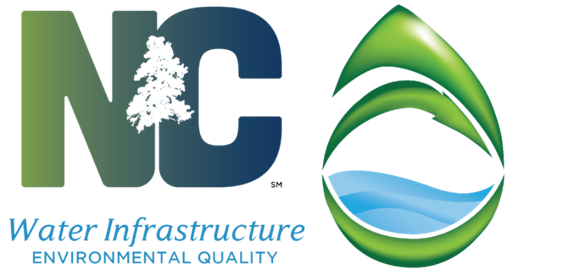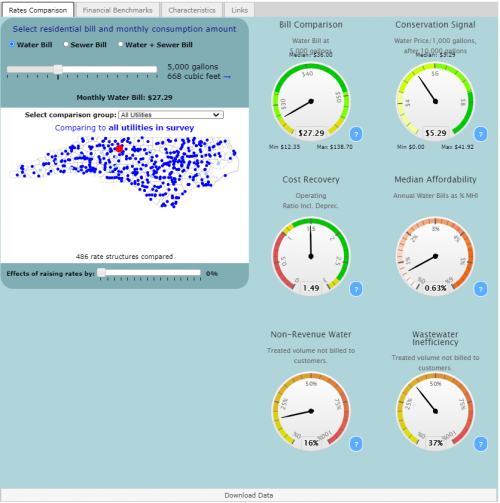 This dashboard is designed to assist utility managers and local officials with benchmarking residential water and wastewater rates against multiple attributes, including utility finances, system characteristics, customer base socioeconomic conditions, and geography. The EFC has surveyed nearly all of the utilities in the state and visualized their rates and multiple key financial performance indicators of the Enterprise Funds annually since 2005. This resource for utilities in North Carolina is funded by the Division of Water Infrastructure of the NC Department of Environmental Quality. Current dashboard displays water and wastewater rates as of January 2024, and FY2023 financial data.
This dashboard is designed to assist utility managers and local officials with benchmarking residential water and wastewater rates against multiple attributes, including utility finances, system characteristics, customer base socioeconomic conditions, and geography. The EFC has surveyed nearly all of the utilities in the state and visualized their rates and multiple key financial performance indicators of the Enterprise Funds annually since 2005. This resource for utilities in North Carolina is funded by the Division of Water Infrastructure of the NC Department of Environmental Quality. Current dashboard displays water and wastewater rates as of January 2024, and FY2023 financial data.
Watch a recording of a webinar demonstrating the dashboard and explaining its metrics using the 2021 dashboard edition (external link to YouTube).
Download the data in the dashboard here.
Now available, the 2024 North Carolina Water and Wastewater Rates Report summarizes the results of the 2023 North Carolina Water and Wastewater Rates Survey, including comparisons to results from past years.
View The DashboardAccessibility Statement
The University of North Carolina at Chapel Hill believes everyone in our community deserves equal access to information. North Carolina Water And Wastewater Rates Dashboard is available to provide data to make decisions for public policy. We are committed to creating an inclusive digital experience. If you are unable to access this information, please contact the Environmental Finance Center for more options.



